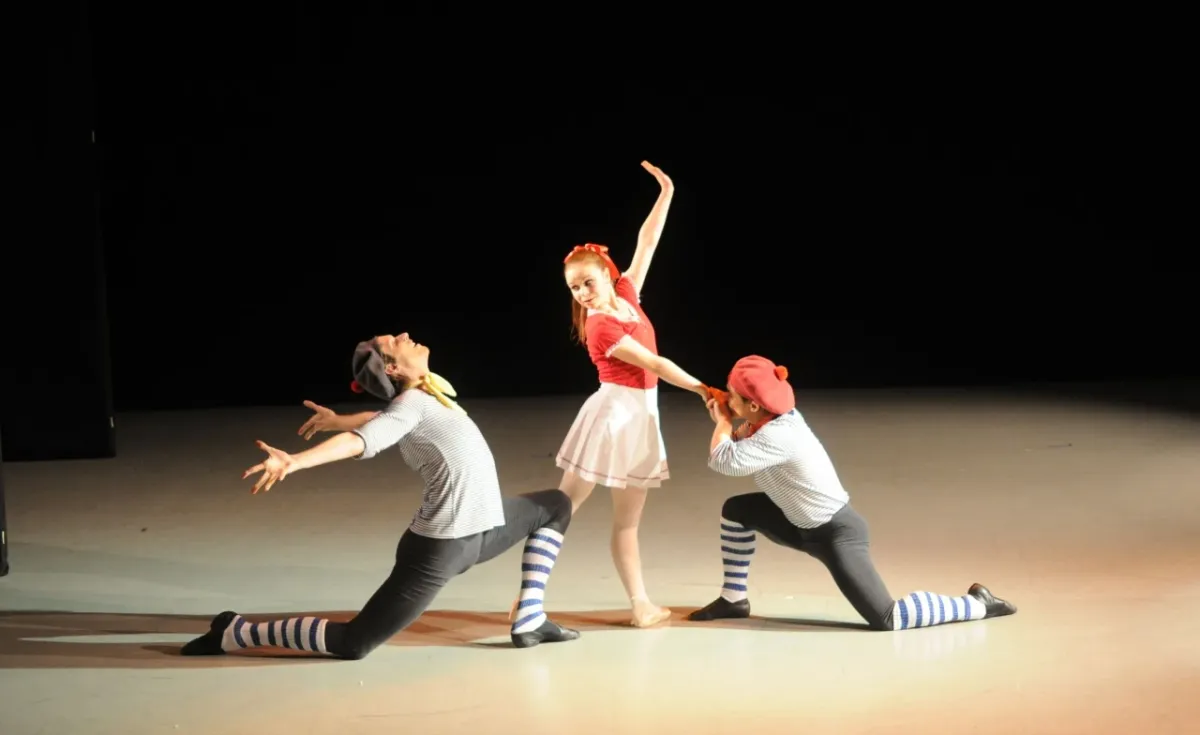A Trip Around the World

Spring Performance
Gelsey Kirkland Academy of Classical Ballet
Miller Theatre at Columbia University
New York, NY
June 2, 2011
Gelsey Kirkland, so famous for her magical performances, has set up a ballet academy in New York, stressing, as she wrote in the program of the first season's spring performance, both Vaganova and Bournonville styles (including mime and character dancing) and especially the theatrical aspect of dance. She presented a wide-ranging program which included visits to Spain and Denmark, with side trips to France .
The Spanish dancing featured genuine flamenco, with live guitar and vocals, danced by the guest artist Maya de Silva with Anthony Rosario in a haunting, powerful display. Theatrical gypsies were on show in a version of the gypsy dance from "Don Quixote', choreography credited to Goleizovsky and Larisa Calero. The Goleizovsky solo was similar to the woman's dance we see in the ABT version, but had a dramatic arc, with the gypsy (Natalie Robison) seeming to mourn a lost love, with thrilling outbursts of feistyness. The corps (choreography by Larisa Calero) had lots of women swirling colorful skirts and men stomping in boots (though the dances looked a bit as if the male gypsies have come to Spain via the Volga), and was wonderfully invigorating.
A more formal Spain turned up in the finale of "Paquita", one of Petipa's Spanish-inflected feasts of dancing. It was wonderful to see Petipa's glorious patterns, and his lovely pas de trois, which was elegantly staged and danced with a stylish verve.
Karina Elver, a Danish dancer on the staff of the academy, staged a series of Bournonville exercises, with lots of elegant footwork and balances on demi-point. The girls evoked little Degas dancers, with the black bands on their throats and soft skirts. She also set the Ballabile from "Napoli", with its joyous dancing, and a mime scene from Bournonville's rarely seen (in the U.S. at least) "A Folk Tale". The troll Birthe, who was substituted as a baby for the human girl Hilda, can't control her violent nature, hard though she tries, and the dancers performed the scene where Birthe torments her servant girls. The underlying pathos of the situation can't really be seen in this brief vignette, and it came across as a comedy, but it was admirably clear and detailed, and the mime looked natural.
Balanchine's rarely performed "A La Francaix" is a jaunty comedy, a parody of all those poetic young men (here a dandy in tennis whites) yearning for unattainable women in white (a sylph from the world of Edward Gorey, who in the end becomes very attainable, as she drops her gown to reveal a skimpy bikini.) It's light and breezy choreography and broad comedy suited the dancers. So did the waltz of the hours from "Coppelia", danced in a version credited to Arthur Saint-Leon. The choreography looked almost exactly like that danced by the Bolshoi in the recent live broadcast of their reconstructed version, based on Petipa's 1884 choreography. Petipa, apparently, knew a good thing when he saw it, and so, it seems, does Gelsey Kirkland.
copyright © 2011 by Mary Cargill



